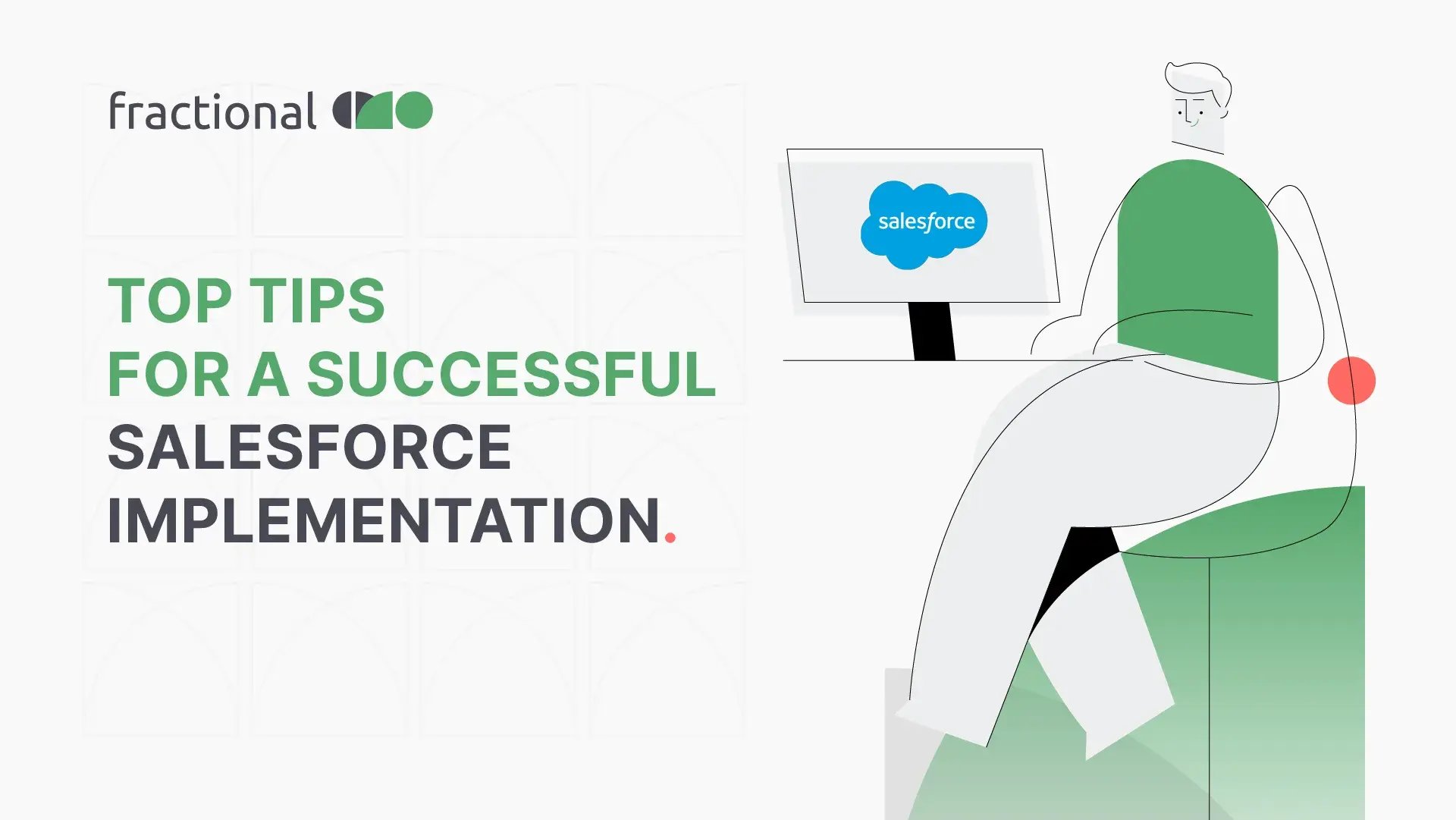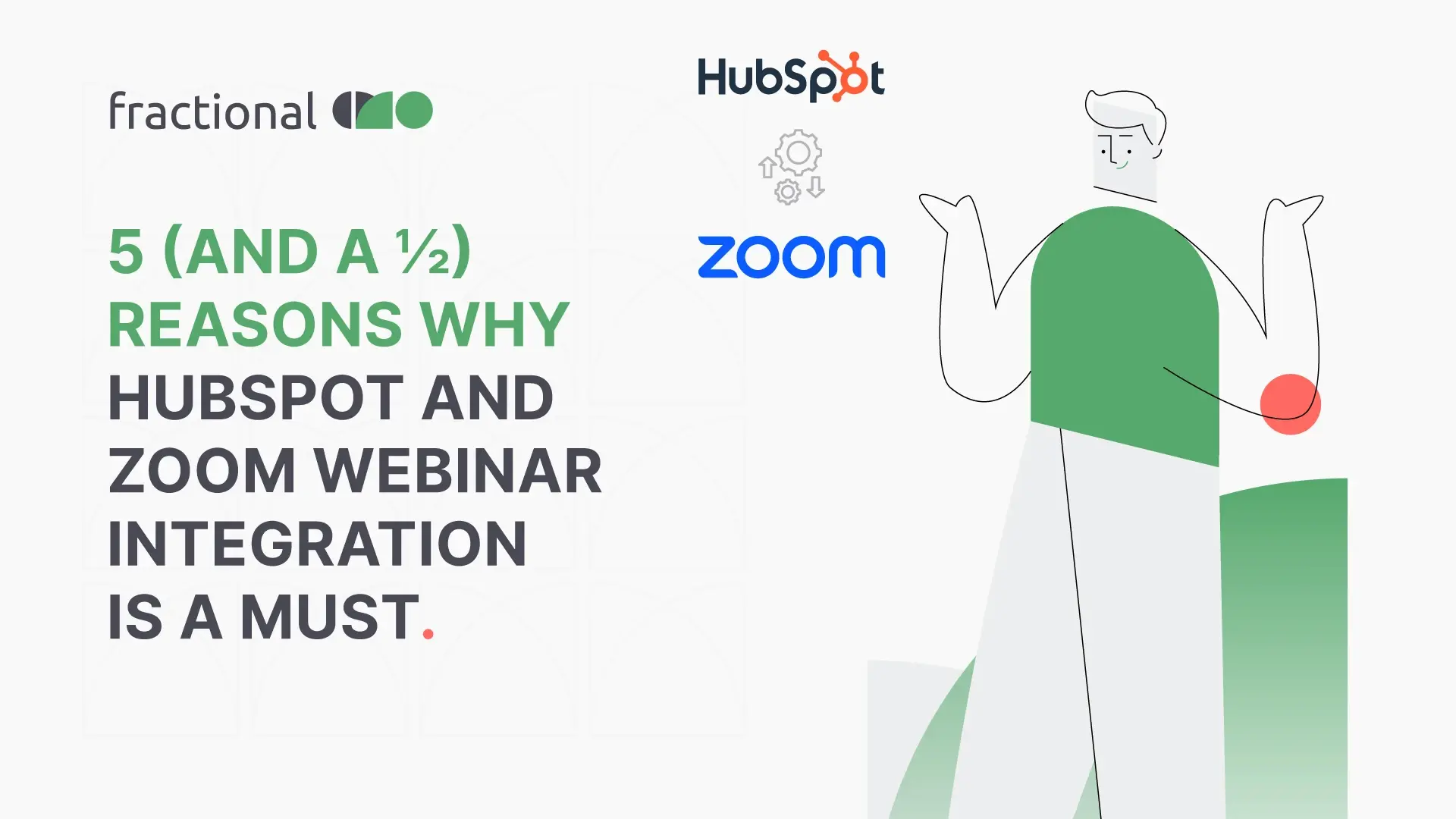Top tips for a successful Salesforce implementation

Salesforce, the leading CRM platform, has revolutionized the way B2B organizations operate, delivering exceptional benefits like increased productivity and improved customer experiences.
To unlock the full potential of Salesforce, a successful implementation is crucial.
In this blog, we will explore top tips and best practices to ensure a seamless Salesforce implementation, empowering your business to thrive in today's competitive landscape.
Additionally, we will discuss effective ways to measure the success of your Salesforce journey, enabling you to track its impact and drive continuous improvement.
First off, here’s what Salesforce themselves have to say, about a successful implementation.
Source: Youtube
Top Tips and Best Practices for Salesforce Implementation
Clearly Define Objectives
The first step in any Salesforce implementation is to clearly define the objectives and goals you want to achieve. Take the time to assess your organization's pain points, challenges, and opportunities for improvement.
Understand the specific needs of your sales, marketing, and customer service teams, as well as any other departments that will be using Salesforce. By understanding your organization's unique requirements, you can tailor the implementation to address these needs effectively.
For example, if your sales team struggles with managing leads and opportunities efficiently, your objective could be to implement Salesforce to streamline the sales process, increase lead conversion rates, and improve overall sales productivity.
On the other hand, if customer service is a priority, your objectives might involve enhancing customer data visibility, reducing response times, and improving customer satisfaction.
Involve Key Stakeholders
A successful Salesforce implementation requires buy-in from all levels of your organization. Involve key stakeholders early in the planning process to gain their input, understand their pain points, and secure their commitment to the project.
Stakeholders from different departments can provide valuable insights into their specific requirements, enabling you to tailor the implementation to meet their needs.
Collaboration among cross-functional teams is essential for a successful implementation. Sales and marketing teams might require different functionalities than the customer service team, and the IT department plays a critical role in the technical aspects of the implementation.
By involving all relevant stakeholders, you can ensure that the implementation meets the needs of the entire organization and fosters a sense of ownership and commitment to its success.
Plan Incrementally
Taking an incremental approach to Salesforce implementation can significantly increase the chances of success. Instead of attempting to implement the entire platform at once, break the process down into smaller, manageable phases.
Prioritize the critical functionalities that align with your defined objectives and focus on getting those up and running first.
An incremental approach allows you to thoroughly test each phase before moving on to the next, reducing the risk of disruptions and ensuring a smoother transition. It also provides an opportunity to gather feedback from users during each phase, enabling you to make timely adjustments based on their input.
This user-centric approach enhances user adoption and minimizes resistance to change.
Provide Comprehensive Training
A key factor in successful Salesforce adoption is providing comprehensive training to all users.
Salesforce offers a wide range of features and functionalities, and ensuring that your team understands how to use them effectively is crucial for maximizing the platform's benefits.
Tailor training sessions to different user roles and levels of experience.
Provide basic navigation and functionality training for new users to get them comfortable with the platform. For more experienced users, offer advanced training that focuses on using Salesforce to drive specific business objectives.
In addition to traditional training sessions, consider providing hands-on training with real-life scenarios and examples that are relevant to your organization. Practical training can help users understand how to apply Salesforce to their daily workflows and address real-world challenges effectively.
Embrace AppExchange
Salesforce's AppExchange is a marketplace that offers a wide range of pre-built applications and integrations that can extend the platform's capabilities. Instead of building custom solutions from scratch, explore AppExchange to find apps that align with your specific business requirements.
The AppExchange offers a diverse range of solutions, from marketing automation tools to industry-specific applications. Leveraging these pre-built apps can save development time and costs, making it a cost-effective strategy for enhancing Salesforce's functionality.
When exploring the AppExchange, consider the reviews and ratings provided by other users to gauge the reliability and quality of each app. Look for solutions that have positive feedback and align with your organization's needs and objectives.
Ways to Measure a Successful Salesforce Implementation
ROI and Cost Savings
Evaluate the return on investment (ROI) of your Salesforce implementation by comparing the costs incurred with the benefits gained. To calculate the ROI, compare the total costs associated with the implementation, including licensing fees, training expenses, and development costs, with the tangible benefits gained.
Some of the benefits that can contribute to cost savings include increased productivity, reduced manual efforts, and streamlined processes. For example, if Salesforce automation allows your sales team to close deals faster, resulting in more revenue generated in less time, that's a tangible benefit that contributes to cost savings.
To assess the overall financial impact of Salesforce, consider conducting a cost-benefit analysis that quantifies both the tangible benefits and the costs associated with the implementation. This analysis can provide valuable insights into the effectiveness of your Salesforce investment and help you make data-driven decisions for future improvements.
User Adoption and Satisfaction
User adoption is a crucial factor in the success of any software implementation, including Salesforce. Even the most robust and feature-rich platform won't deliver its full potential if users do not embrace it and incorporate it into their daily workflows.
To measure user adoption, track key metrics such as login frequency, active users, and the percentage of users who regularly engage with Salesforce. Low adoption rates may indicate that the platform is not meeting the needs of your users or that additional training and support are required.
User satisfaction is equally important for measuring the success of Salesforce implementation. Conduct surveys or gather feedback from users to understand their experiences with the platform. Ask for input on what is working well and where improvements can be made.
Pay attention to any pain points or challenges users are facing and take proactive steps to address them. Addressing user feedback and continuously improving the platform based on user input can drive higher user satisfaction and foster a positive perception of Salesforce within your organization.
Key Performance Indicators (KPIs)
Key performance indicators (KPIs) are critical metrics that directly align with your defined objectives and measure the success of your Salesforce implementation. These metrics can vary depending on the specific objectives you set at the beginning of the implementation process.
For example, if your objective is to increase sales productivity, relevant KPIs might include metrics such as sales revenue, sales conversion rates, and average deal size. Monitoring these KPIs over time allows you to assess the impact of Salesforce on your sales team's performance and identify areas for improvement.
Similarly, if your objective is to enhance customer service, relevant KPIs could include customer satisfaction scores, response times, and first-call resolution rates. By tracking these metrics, you can gauge the effectiveness of Salesforce in improving your customer service operations and meeting customer expectations.
Regularly review and analyze these KPIs to identify trends, patterns, and areas for improvement. Use the data to inform strategic decisions and adjustments to your Salesforce implementation to continuously optimize its impact on your organization.
Conclusion
Salesforce is a powerful platform that can transform your B2B organization, driving productivity, customer satisfaction, and revenue growth.
By following top tips and best practices for implementation, involving key stakeholders, and prioritizing user adoption, your organization can harness the full potential of Salesforce and thrive in today's competitive business landscape.
Measuring the success of your Salesforce implementation is essential to understanding its impact on your organization and making data-driven decisions for improvement. By assessing the ROI, user adoption, and key performance indicators, you can gain valuable insights into the effectiveness of Salesforce and identify areas for enhancement.
As you continue your Salesforce journey, remember that continuous improvement and adaptation are key to staying ahead in the ever-evolving world of B2B businesses. With Salesforce as a driving force, your organization can unlock new opportunities, enhance customer experiences, and achieve lasting success.
And if your bandwidth doesn’t allow taking up the implementation in-house or this seems like a tedious task to you, fractional CMO is here to do the heavy lifting, so that you focus on other strategic initiatives.
Here’s a client success story where we implemented Salesforce Development Cloud for their business.
Excited to kickstart your Salesforce implementation? Contact us Today!
Case study - Oil & Gas company
Know how one of the world's largest oil and gas companies achieved an optimized SFMC setup and campaign configuration with fractional CMO.










